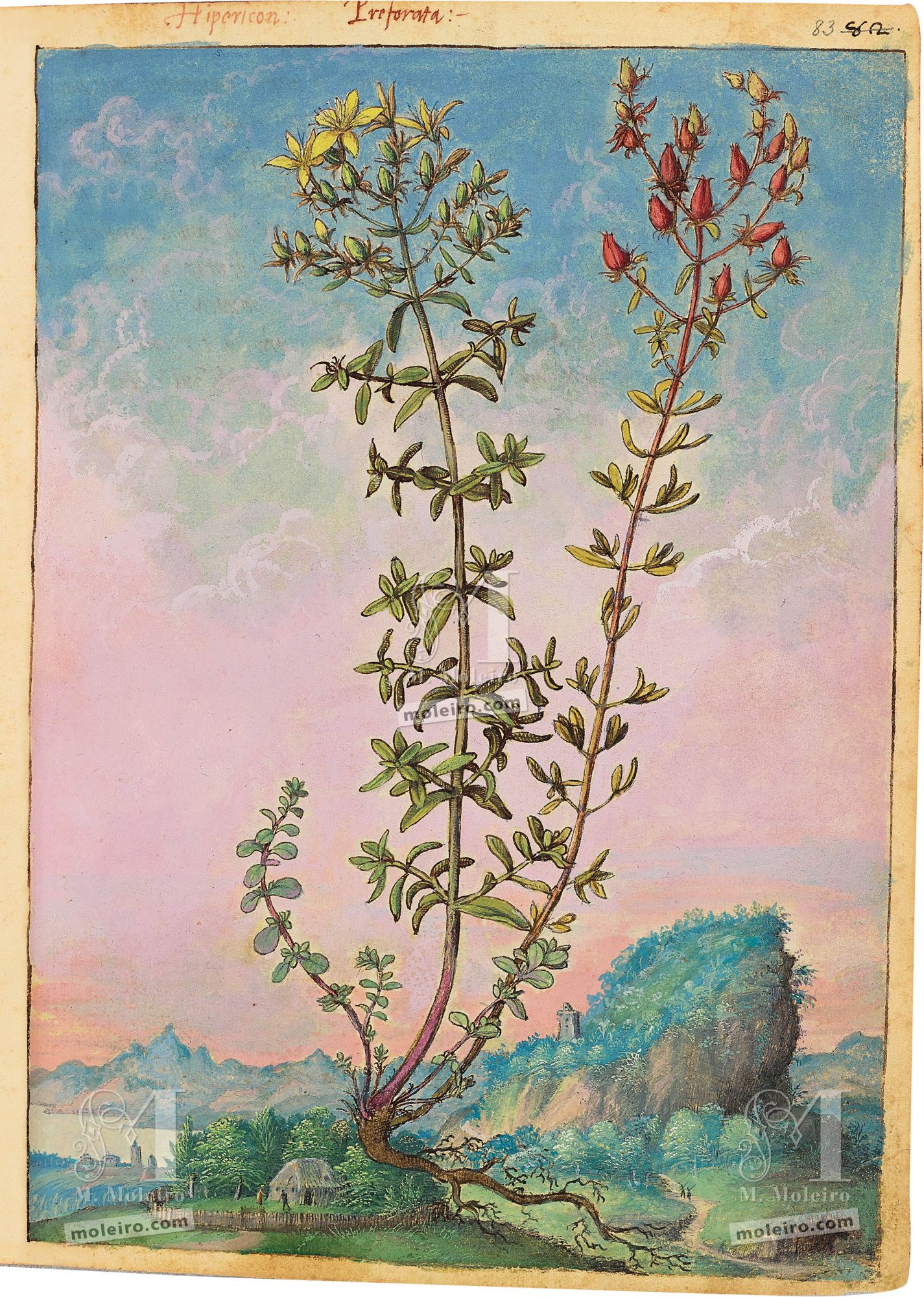"Some call perforate St John’s wort androsaemum, others corion, and others ground pine, because its seed smells of pine resin. It has flowers like those of the rue; it is a branching plant, a span tall and reddish. The flower is yellow, like white violets, and when stroked with the finger exudes a liquid like blood; this is why it is, as above, called androsaemum. It has pods that are hairy, elongated, and rounded, the size of barley grains; inside is the seed, black and with a resinous smell. It grows in cultivated and uncultivated places; it has diuretic qualities, applied from below it induces the menstrual cycle, and drunk with wine it is good for tertian and also quartan fevers. The seed, drunk for forty continuous days, cures sciatica; the leaves, applied as a poultice with the seed, relieve burns." (f. 82v)
This plant grows on wasteland and dry pastures throughout Italy, France, Spain, Great Britain, much of Eurasia, and northern Africa. Nowadays it is a relatively common cosmopolitan plant. Its name comes from the fact that it usually flowers on St John’s day, i.e. 24 June. It contains essential oil, tannins and hypericin, a red dye. The dark-coloured oil of this plant has good healing properties, for burns in particular. The extract of St John’s wort is an antidepressant, but can interfere with contraceptives that suppress ovulation. It was used in anthroposophic medicine for backache and muscular rheumatism.
Ramón Morales Valverde
Real Jardín Botánico de Madrid
(Extract from the commentary volume of Mattioli's Dioscorides illustrated by Cibo)

"Some call perforate St John’s wort androsaemum, others corion, and others ground pine, because its seed smells of pine resin. It has flowers like those of the rue; it is a branching plant, a span tall and reddish. The flower is yellow, like white violets, and when stroked with the finger exudes a liquid like blood; this is why it is, as above, called androsaemum. It has pods that are hairy, elongated, and rounded, the size of barley grains; inside is the seed, black and with a resinous smell. It grows in cultivated and uncultivated places; it has diuretic qualities, applied from below it induces the menstrual cycle, and drunk with wine it is good for tertian and also quartan fevers. The seed, drunk for forty continuous days, cures sciatica; the leaves, applied as a poultice with the seed, relieve burns." (f. 82v)
This plant grows on wasteland and dry pastures throughout Italy, France, Spain, Great Britain, much of Eurasia, and northern Africa. Nowadays it is a relatively common cosmopolitan plant. Its name comes from the fact that it usually flowers on St John’s day, i.e. 24 June. It contains essential oil, tannins and hypericin, a red dye. The dark-coloured oil of this plant has good healing properties, for burns in particular. The extract of St John’s wort is an antidepressant, but can interfere with contraceptives that suppress ovulation. It was used in anthroposophic medicine for backache and muscular rheumatism.
Ramón Morales Valverde
Real Jardín Botánico de Madrid
(Extract from the commentary volume of Mattioli's Dioscorides illustrated by Cibo)